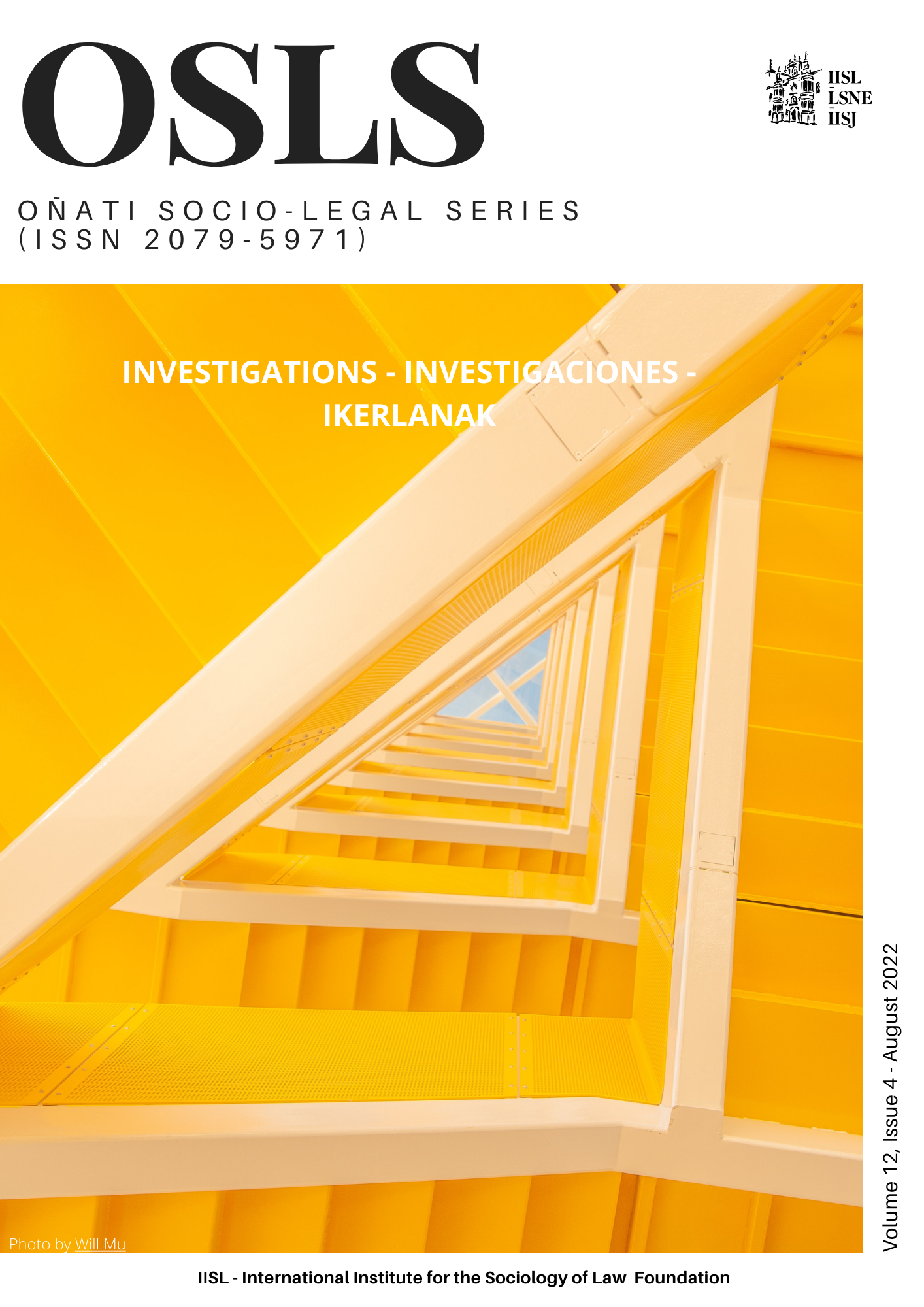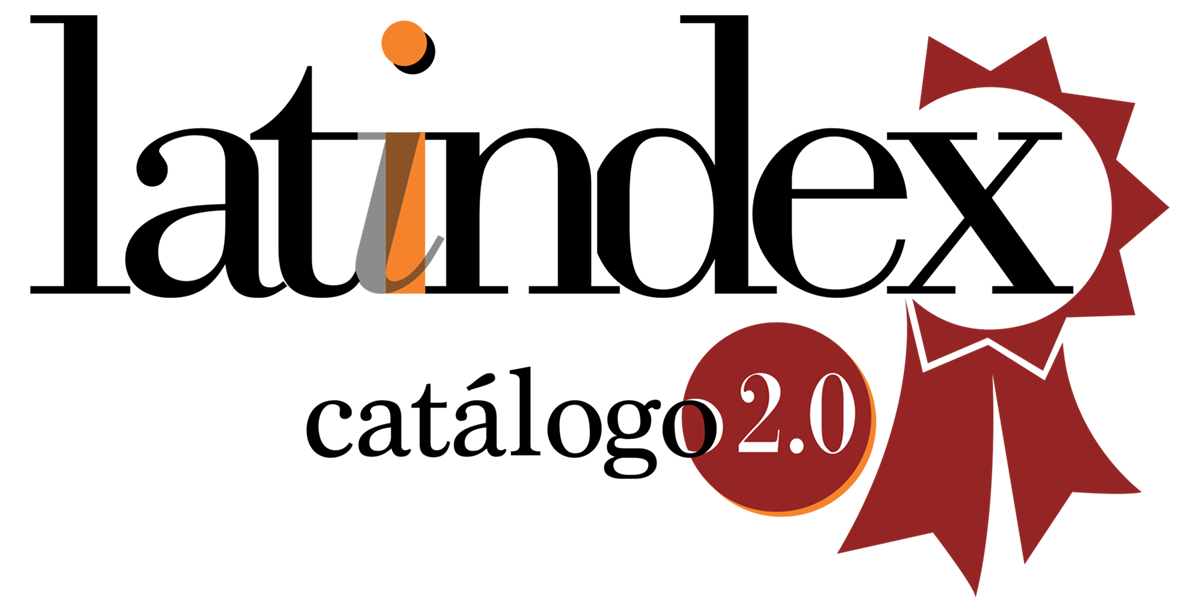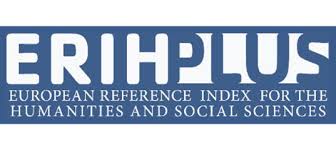The utopia of Rojava
A new world for stateless people
DOI:
https://doi.org/10.35295/osls.iisl/0000-0000-0000-1269Keywords:
utopia, legal change, participatory art, democracy, revolutionAbstract
This article investigates how participatory art can contribute to legal change. As a case study, it discusses Jonas Staal’s project of New World Summit in Rojava, a (so far still) autonomous region in North and East Syria. It offers an interesting case, since it invites the law to include what it has excluded so far. To begin with, it is clarified how change is conceived within legal systems based on the rule of law. Although law resists radical change, it is involved in a constant process of adaptation to its environment. Subsequently, Staal’s project of New World Summit is discussed from a utopian perspective. Its apparent impossibility is what makes is so valuable for law and its development. By erecting a parliament for Rojava, it presents a picture of how the international order could look like when things were different. It basically is an exercise in “utopian world-making”.
Downloads
Metrics
Global Statistics ℹ️
|
1144
Views
|
1032
Downloads
|
|
2176
Total
|
|
References
Ademollo, F., 2011. The Cratylus of Plato: A commentary. Cambridge University Press.
Anker, K., 2005. The truth in painting: Cultural artifacts as proof of native title. Law Text Culture [online], vol. 9, 191–224. Available from: https://doi.org/10.2139/ssrn.2756010 [Accessed 7 February 2022]. DOI: https://doi.org/10.14453/ltc.540
Benmakhlouf, A., 2018. Jonas Staal’s plea for utopian realism. The Skinny [online], 6 June. Available from: http://www.jonasstaal.nl/site/assets/files/1855/2018-06-06-_adam_benmakhlouf-_jonas_staals_plea_for_utopian_realism-_the_skinny.pdf [Accessed 1 September 2021].
Berlin, I. (with H. Hardy, ed.), 2013. The crooked timber of humanity: Chapters in the history of ideas. Princeton University Press. DOI: https://doi.org/10.1515/9781400847815
Bishop, C., 2012, Artificial Hells: Participatory art and the politics of spectatorship. London: Verso Books.
Bloch, E., 1995. The principle of hope: Volume two. Trans.: N. Plaice, S. Plaice and P. Knight. Cambridge, MA: The MIT Press.
Court, M., and Den Hond, C., 2020. Is this the end of Rojava? The Nation [online], 18 February. Available from: https://www.thenation.com/article/world/rojava-kurds-syria/ [Accessed 1 September 2021].
Cover, R., 1995. Nomos and narrative. In: M. Minow, M. Ryan and A. Sarat, eds., Narrative, violence and the law: Essays of Robert Cover. Ann Arbor: University of Michigan Press, 95–172.
Dworkin, R., 1986. Law’s empire. Cambridge, MA: Harvard University Press.
Falk Moore, S., 1973. Law and social change: The semi-autonomous field as an appropriate subject of study. Law & Society Review, 7(4), 719–746. DOI: https://doi.org/10.2307/3052967
Fuller, T., 2012. Radical temporality and the modern imagination: Two themes in the thought of Michael Oakeshott. In: P. Franco and L. Marsh, eds., A Companion to Michael Oakeshott. University Park: The Pennsylvania State University Press, 120–133. DOI: https://doi.org/10.5325/j.ctt7v465.10
Gadamer, H.G., 2004. Truth and method. Trans. J. Weinsheimer D.G. Marshall. London: Continuum. (Originally published in 1960).
Gadamer, H.G.,1985a. Plato und die Dichter. In: H.G. Gadamer, Gesammelte Werke. Band 5: Griechische Philosophie I. Tübingen: Mohr Siebeck, 187–211.
Gadamer, H.G.,1985b. Platos Staat der Erzieher. In: H.G. Gadamer, Gesammelte Werke. Band 5: Griechische Philosophie I. Tübingen: Mohr Siebeck, 249–262.
Habermas, J., 1981. Theory of communicative action, Volume one: Reason and the rationalization of society. Trans.: T.A. McCarthy). Boston: Beacon Press.
Hagen, I., 2017. New World Embassy: Rojava. Temporary Art Review [online], 11 January. Available from: http://temporaryartreview.com/new-world-embassy-rojava/ [Accessed 1 September 2021].
In der Maur, R., et al., eds., 2016. New worlds: The democratic self-administration of Rojava & New World Summit (Studio Jonas Staal) [online]. Oslo: KORO Public Art Norway/URO. Available from: http://www.jonasstaal.nl/site/assets/files/1521/new_worlds.pdf [Accessed 7 February 2022].
Kelsen, H., 1970. The pure theory of law. Trans.: M. Knight. Berkeley: University of California Press.
Kelsen, H., 2002. Introduction to the problems of legal theory. Trans.: B.L. Paulson and S.L. Paulson. Oxford: Clarendon Press.
Knapp, M., Flach, A., and Ayboğa, E., 2016. Revolution in Rojava: Democratic autonomy and women’s liberation in Syrian Kurdistan. Trans.: J. Biehl. London: Pluto Press. DOI: https://doi.org/10.2307/j.ctt1gk07zg
Kruger, R., 2017. Distopia: The utopia of dissidence and cultural pluralism in three generations of Dutch artists [online]. Thesis (PhD). University of Pretoria. Available from: https://repository.up.ac.za/handle/2263/60373 [Accessed 1 September 2021].
Laclau, E., 2007. On populist reason. London: Verso Books.
Latour, B., 2013. The making of law: An ethnography of the Conseil d’Etat. Trans.: M. Brilman and A. Pottage. Cambridge: Polity Press.
Levitas, R., 2010. The concept of utopia. Oxford: Peter Lang. DOI: https://doi.org/10.3726/978-3-0353-0010-9
MacCormick, N., 1995. Time, narratives, and law. In: J. Bjarup and M. Blegvad, eds., Time, law, and society: Proceedings of a Nordic Symposium Held May 1994 at Sandbjerg Gods, Denmark. ARSP-Beiheft 64. Stuttgart: Franz Steiner, 111–125.
Marquard, O., 2007. Skepsis in der Moderne. Stuttgart: Philipp Reclam jun.
Mohr, R., 2002. Shifting ground: Context and change in two Australian legal systems. International Journal for the Semiotics of Law [online], 15(1), 1–24. Available from: https://ro.uow.edu.au/lawpapers/47/ [Accessed 7 February 2022]. DOI: https://doi.org/10.1023/A:1015000128505
Morphy, F., 2008. Enacting sovereignty in a colonized space: The Yolngu of Blue Mud Bay meet the native title process. In: D. Fay and D. James, eds., The rights and wrongs of land restitution: “Restoring what was ours”. Abingdon: Routledge-Cavendish, 31–57.
Müller-Mall, S., 2016, LAW/ART: Constructive interferences. In: Avi Feldman, ed., Imagine Law, OnCurating [online], 28 January. Available from: https://www.on-curating.org/issue-28-reader/lawart-constructive-interferences.html#.X2B0Ty2YPYU [Accessed 1 September 2021].
Oakeshott, M., 2002. Experience and its modes. Cambridge University Press.
Přibáň, J., 2007. Legal symbolism: On law, time and European identity. Hampshire: Ashgate.
Ricœur, P., 1986. Lectures on ideology and utopia. New York: Columbia University Press.
Rojava Information Center (RIC), 2019. Beyond the frontlines: The building of the democratic system in North and East Syria [online]. Report. 19 December. https://rojavainformationcenter.com/2019/12/report-beyond-the-frontlines/ [Accessed 1 September 2021].
Rojava: Syria’s Secret Revolution, 2014. Documentary, YouTube clip. BBC / Mehran Bozorgnia / Bozorgnia Films. Darius Bazargan [online], 14 November. Available from: https://www.youtube.com/watch?v=fKhjJfH0ra4 [Accessed 1 September 2021].
Sabio, O., 2015. Rojava: An alternative to imperialism, nationalism, and islamism in the Middle East (an introduction). Lulu.com.
Schleiermacher, F., 1838. Über die verschiedenen Methoden des Übersetzens’. In: F. Schleiermacher, Sämtliche Werke: 2. Band. Berlin: G. Reimer und Herbig, 201–238.
Staal, J., 2010a. Post-propaganda. Amsterdam: The Netherlands Foundation for Visual Arts, Design and Architecture.
Staal, J., 2010b. Power?...To which people?! Heiningen: Jap Sam Books.
Staal, J., 2015. To make a world: Part III. e-flux Journal [online], no. 63, March. Available from: https://www.e-flux.com/journal/63/60907/to-make-a-world-part-iii-stateless-democracy/ [Accessed 1 September 2021].
Staal, J., 2016a. Ideology = form. In der Maur, R., et al., eds., 2016. New worlds: The democratic self-administration of Rojava & New World Summit (Studio Jonas Staal) [online]. Oslo: KORO Public Art Norway/URO, 93–108. Available from: http://www.jonasstaal.nl/site/assets/files/1521/new_worlds.pdf [Accessed 1 September 2021].
Staal, J., 2016b. Law of the state, truth of art: Two case studies of art as evidence. In: A. Feldman, ed., Imagine law. OnCurating [online], 28, January. Available from: https://www.on-curating.org/issue-28-reader/law-of-the-state-truth-of-art-two-case-studies-of-art-as-evidence.html#.X2CkVi2YPYU [Accessed 1 September 2021].
Staal, J., 2018. Propaganda art from the 20th to the 21st century [online]. Thesis (PhD). Leiden University. Available from: https://openaccess.leidenuniv.nl/handle/1887/60210 [Accessed 1 September 2021].
Sumner, W.G., 1959. Folkways: A study of the sociological importance of usages, manners, customs, mores, and morals. New York: Dover.
Tamanaha, B.Z., 2004. On the rule of law: History, politics, theory. Cambridge University Press. DOI: https://doi.org/10.1017/CBO9780511812378
Tamanaha, B.Z., 2012. The history and elements of the rule of law. Singapore Journal of Legal Studies, 232–247. DOI: https://doi.org/10.2139/ssrn.2012845
Van Klink, B., 2018. Law at the right time: A plea for slow law in hasty times. In: L. Corrias and L. Francot, eds., Temporal boundaries of law and politics: Time out of joint. New York: Routledge, 33–52. DOI: https://doi.org/10.4324/9781351103480-3
Weinrich, H., 2008. Knappe Zeit: Kunst und Ökonomie des befristeten Lebens. Munich: Beck.
Published
How to Cite
Issue
Section
License
Copyright (c) 2022 Bart van Klink

This work is licensed under a Creative Commons Attribution-NonCommercial-NoDerivatives 4.0 International License.
OSLS strictly respects intellectual property rights and it is our policy that the author retains copyright, and articles are made available under a Creative Commons licence. The Creative Commons Non-Commercial Attribution No-Derivatives licence is our default licence and it regulates how others can use your work. Further details available at https://creativecommons.org/licenses/by-nc-nd/4.0 If this is not acceptable to you, please contact us.
The non-exclusive permission you grant to us includes the rights to disseminate the bibliographic details of the article, including the abstract supplied by you, and to authorise others, including bibliographic databases, indexing and contents alerting services, to copy and communicate these details.
For information on how to share and store your own article at each stage of production from submission to final publication, please read our Self-Archiving and Sharing policy.
The Copyright Notice showing the author and co-authors, and the Creative Commons license will be displayed on the article, and you must agree to this as part of the submission process. Please ensure that all co-authors are properly attributed and that they understand and accept these terms.























